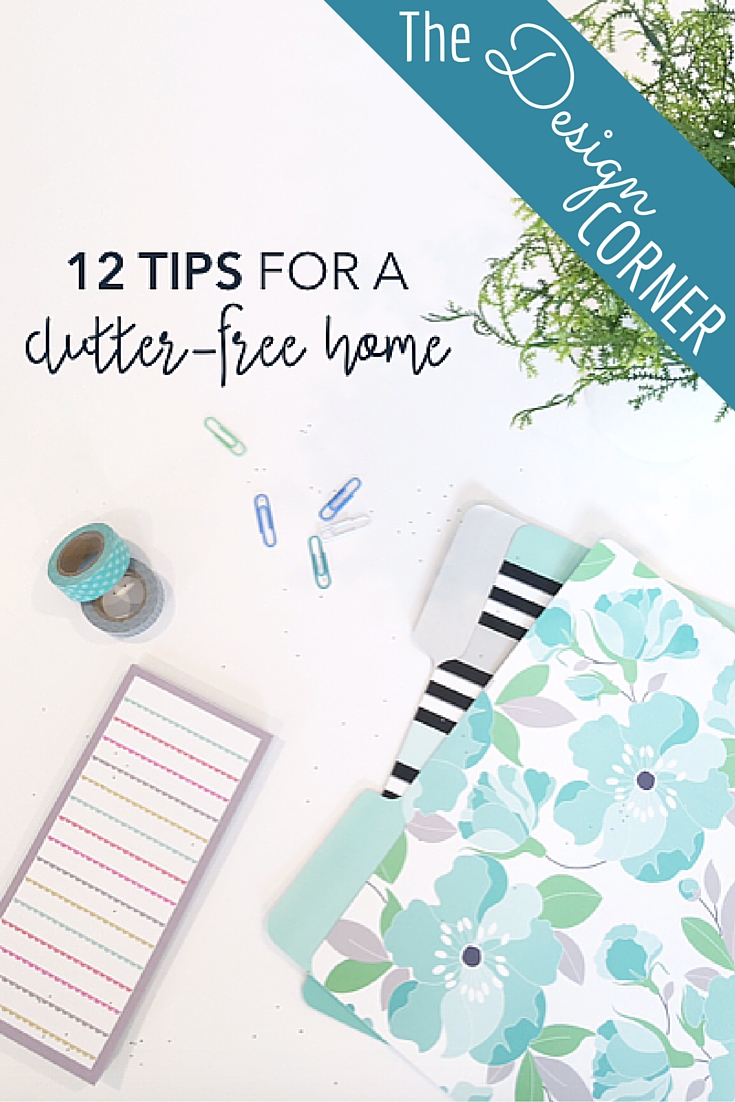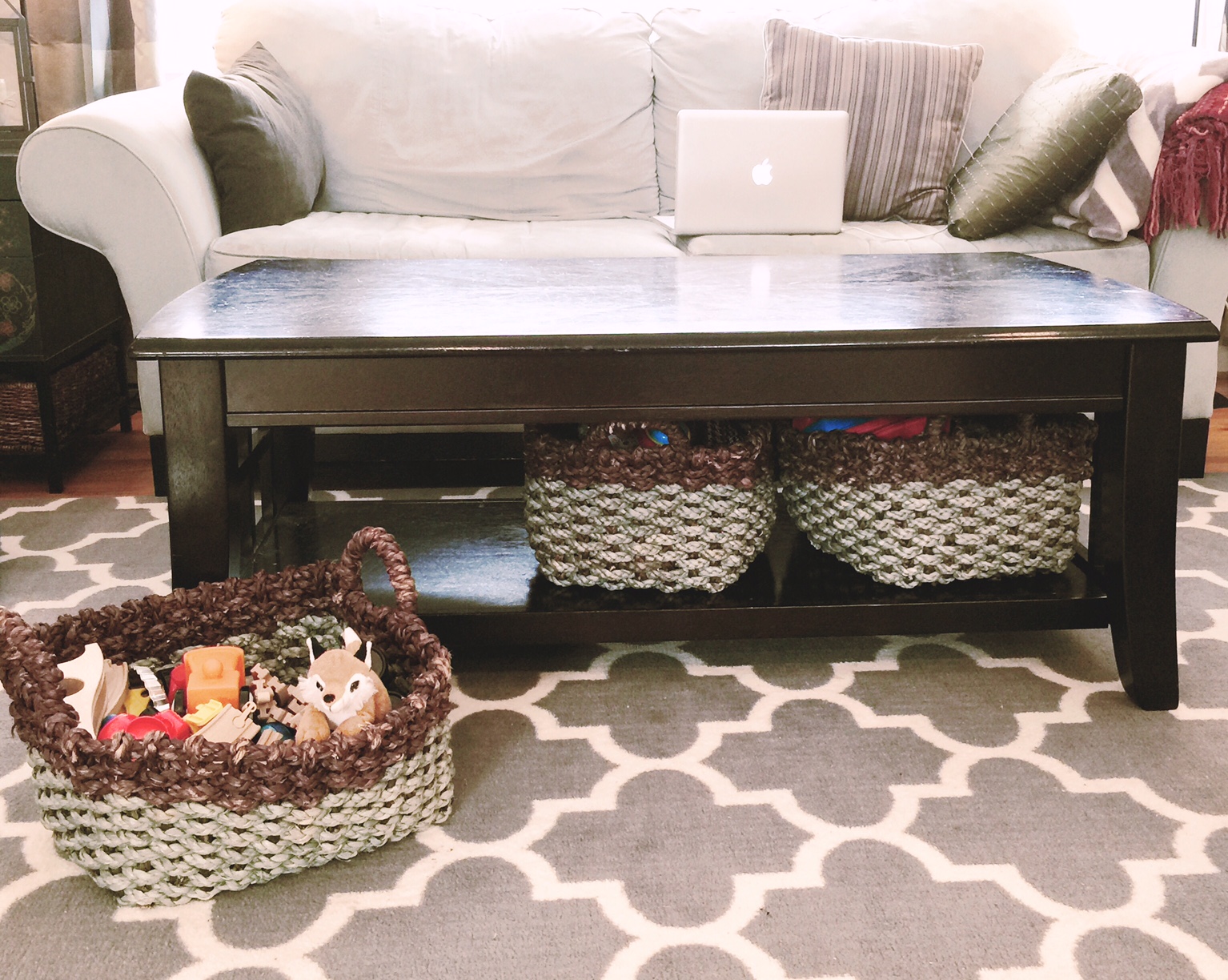
We all know that we should cut back on clutter in our lives (unless you are one of those blessed few who have already mastered the art of an organized life, in which case, we salute you) – but are you aware that clutter actually negatively impacts your brain?? Yep, it’s not just about trying to look good for the guests.
The Princeton Neuroscience Institute conducted a study that showed that clutter inhibits your ability to focus and process information. UCLA researchers found in their observation of 32 LA families that the stress hormones of the mothers spiked during times when they had to deal with their belongings. I could keep going, but I think you get the picture!
So, who’s for a focused and stress-free life??
We’ve compiled a list of 12 easy tips to help get you started down this path.
1) ONCE-A-DAY CLEANING
Set a timer for 10 to 15 minutes at the end of your day where all you do is cruise around your abode picking up and putting away.
Do you have kids? Get them each their own basket and make it a game for them to put away all their stuff as quickly as they can.
2) YOU’RE OUTTA HERE!
An Apartment Therapy tip: make yourself an outbox (whether a designated area, bin, or actual box). Any time you come across something that you haven’t used in a while, put it in the outbox. Every couple weeks to a month, donate the contents of the box.
The point of this helpful tool is to assist you in disengaging from your stuff. If you don’t miss the items while they’re in the outbox, then you know that you can live without them.
3) MAKE A HOME
Make sure that everything in your house has a home. If all items have a spot where they fit perfectly, it becomes infinitely easier to clean up. Problems arise when things don’t have a well-designated spot. They end up just sitting around or getting stuffed somewhere they don’t belong because no one knows what else to do with them.

4) FUNCTIONALITY FINDER
Walk into the various rooms in your house and ask yourself the following questions:
What is the function of this room?
What items are needed for that function?
Any items that don’t contribute to the function or the aesthetic of the room are superfluous.
5) MINIMIZE WALL CLUTTER
Swapping out gallery walls (with lots of frames and photos) for one or two larger photos (or pieces of art) can go a long way into make a space feel more peaceful and less cluttered and chaotic (though, admittedly, what you do with your wall art falls mostly under personal preference).
6) OPEN CORNERS
Here’s a nifty design tip for you: move or remove items from the corners of your rooms – this one simple step will instantly make your home seem larger, more open, and less cluttered.
7) DEAL WITH IT
Create a “landing strip” for your home (another handy Apartment Therapy tip) – everything that comes through the door with you must be dealt with immediately – junk mail goes in the recycling bin, purse goes on the hook, etc.
Buy yourself some cute file folders, attach a hanging basket to a wall, and have every family member put the plethora of papers they bring home in their designated folder. Then, once the folders start to bulge, clean them out!
8) ASSIGN PATTERN
Patterns are a wonderful thing, yes? But there is such a thing as too much of a good thing.

Our eyes are automatically drawn to patterns and bright colors. So, a room with lots of patterns can feel overwhelming and disjointed as our eyes struggle to know where to look.
Consider where pattern can go in the room (curtains? pillows? rug? chair?) and then pick one or two of those spots for your patterned material. While this doesn’t actually cut back on physical clutter, it can go a long way towards minimizing visual clutter, which in turn cuts back on mental clutter, allowing you to focus and relax.
9) JUST DO IT
Making a commitment to these three (simple) things will hugely boost your clutter control:
- Make your bed at the start of every day (this makes your bedroom feel put together and peaceful)
- Put your clothes away (it’ll take you one minute and save you lots of piles of clutter and wrinkles)
- Wash the dishes before you go to bed (because nothings says “maybe I should just get back in bed” better than a sink full of dirty dishes first thing in the morning)
10) PACK & STORE
Pack up and hide away out-of-season clothing so that your closet and drawer space is fully utilized for what you need now.
11) CLEAR CLOSET FLOORS
Removing items that are stored on the floor in each closet will instantly make the closet look and feel bigger. A functional storage system will save you from sifting through piles of shoes (or whatever else lives in your closet) to find what you’re looking for.
For closets (which don’t need to be as aesthetically pleasing) try using clear plastic bins to store your belongings so that you know what’s where. This saves you the shoulder strain of lifting 6 boxes off the top shelf before finding the right one.
12) SCHEDULED REVIEWS
Review your clothing closets on a regular basis (monthly or seasonally is probably best). Be honest about what you haven’t worn and donate or sell it!
Try hanging all your clothing hangers a certain way at the start of a season (hang them opposite of the way you usually do). Once you’ve worn a piece of clothing, hang it back up the way you usually would. That way, at the end of the season, you’ll know for sure which clothes you haven’t worn because they’ll still be hanging the original way.
BONUS!
A clutter-free home is an easier-to-clean home. So it’s really a win-win situation. The less stuff you have on your shelves, counters, and floors the easier it is to dust, vacuum, mop, etc., making those tasks a little more enjoyable.



